Pyxiemoss, Pyxidanthera barbulata, is an evergreen creeping subshrub. It's petite snow-white flowers with accents of yellow and red decorate only special areas in NJ's Pine Barrens
Other common names for Pyxidanthera barbulata include flowering pixiemoss. 'Pixie' in English means small, fairylike. However, the genus name Pyxidanthera comes from Greek 'pyxis' meaning a small box and Latin 'anthera' for anthers referring the boxy shape of the anthers! It is not a moss which doesn't have flowers, so the added description 'flowering' is added to the common name.
Flowers
Flowers:
These diminutive flowers are sure to delight.
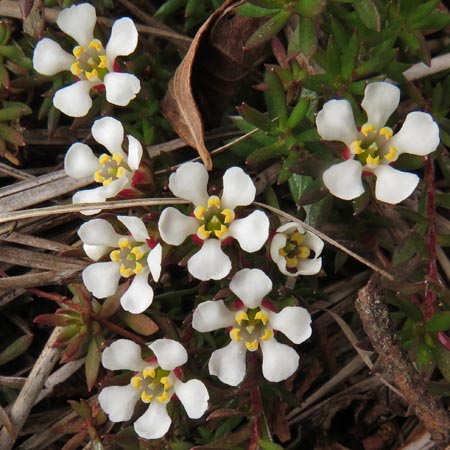
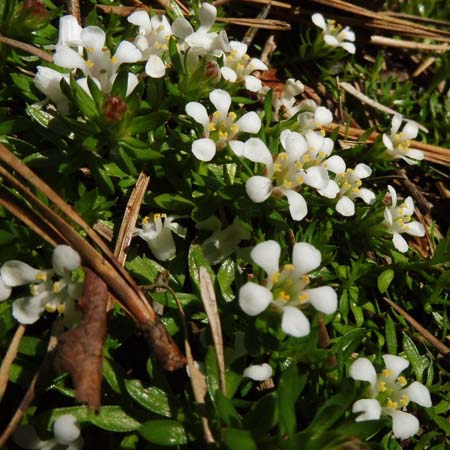
Pyxidanthera barbulata flowers are about 1/3 inches across with 5 petals, 5 stamens, and 1 pistil. Interestingly, the base of the stamens is white and flat. The edges are fused to petals on both sides so that the base of the corolla forms a tube. The connection of the stamen and petals is termed - connivent. The petal lobes and free filaments and anthers alternate. The stigma is slightly 3 parted.
Outside of the corolla are 5 sepals that are reddish toward the distal end and greenish toward the base both on the inner and outer surfaces.
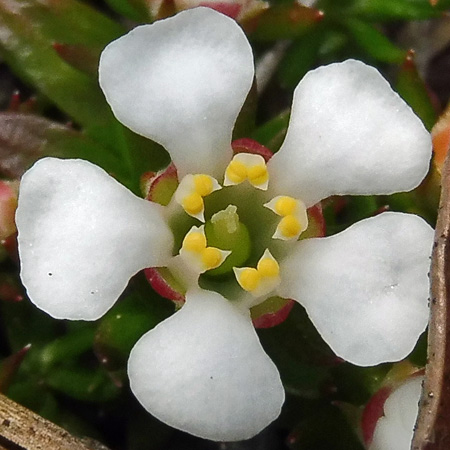
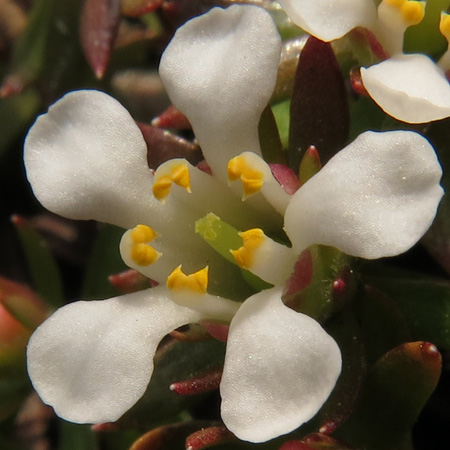
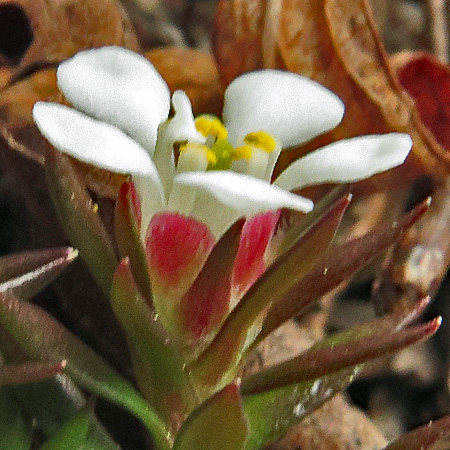
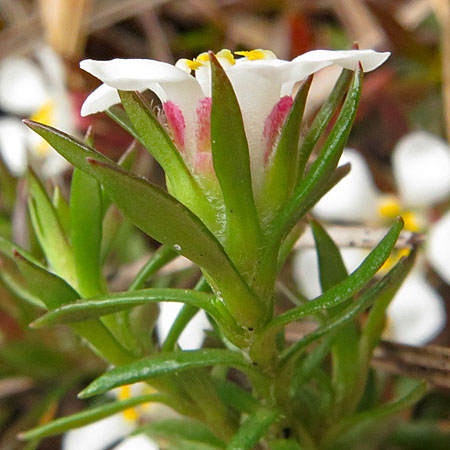
In the closeups below: Each anther has two yellow pollen sacs. Each pollen sac has a white awn shaped tab. In order to release pollen, the tab needs to be depressed. The red arrow points to the horizontal line on the pollen sac where the lid will open when the tab is depressed.
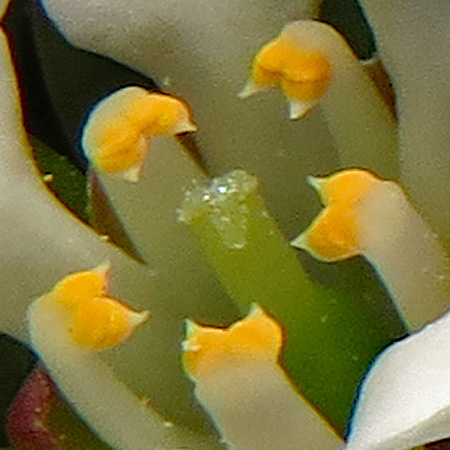
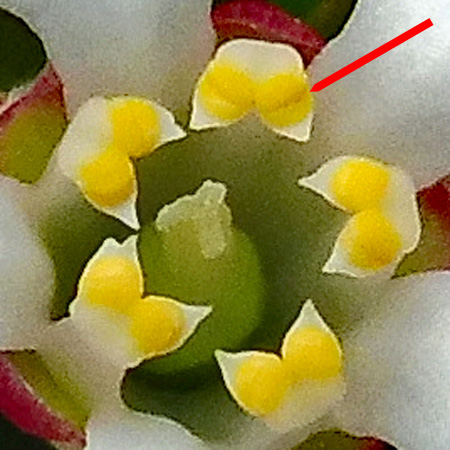
In the below two close ups, white pollen can be seen, mostlikely from the opening of the lids of the pollen sacs.
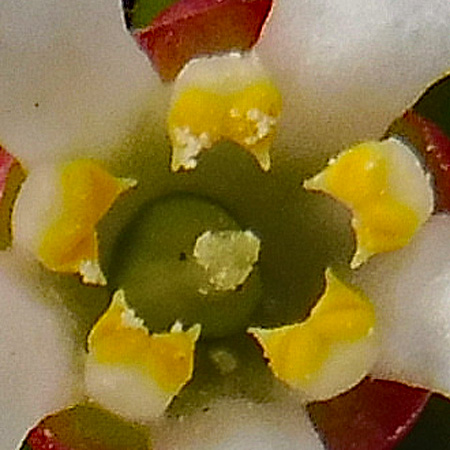
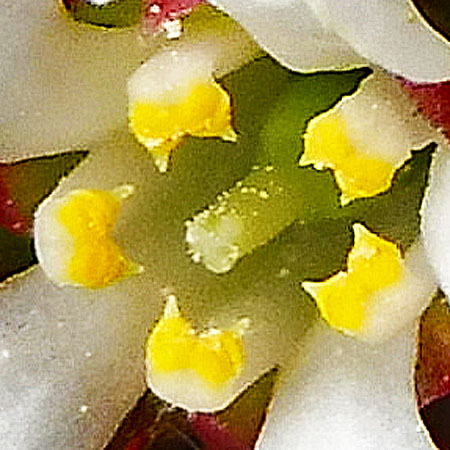
In the photos below: After pollination, the corolla with its stamens is discarded. The shape of the corolla is more evident in the discarded corolla. Also, the distinction between the stamen and petal at the corolla base can be seen. The red arrow points to the stamen part of the corrola. In the remaining flower, the pistal and the sepals are more evident.
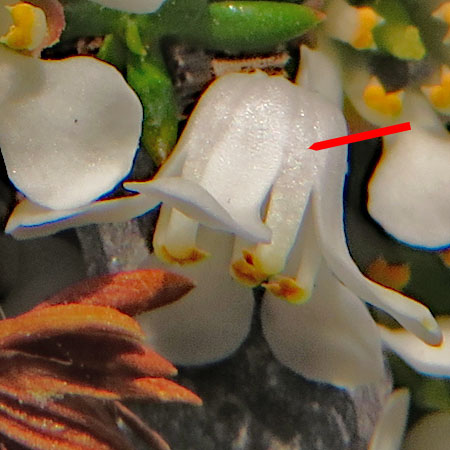

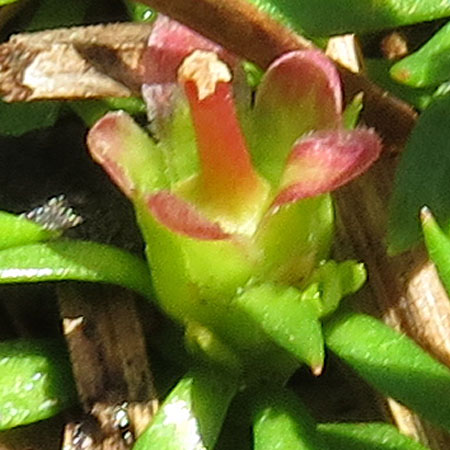
Buds:
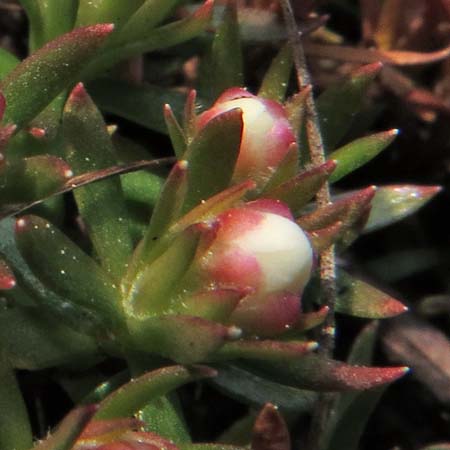
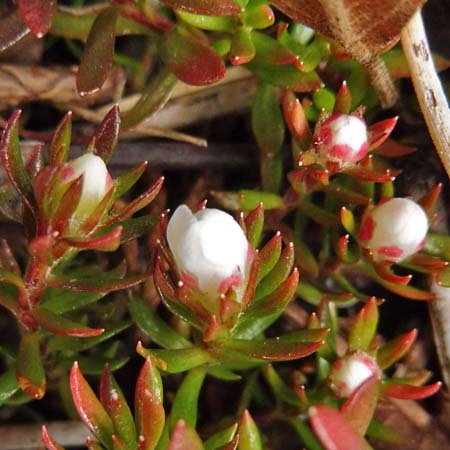
Fruit
Fruit:
The corolla is discarded leaving the pistil and sepals. The pistil matures, produces seeds, and the seeds are dispersed.

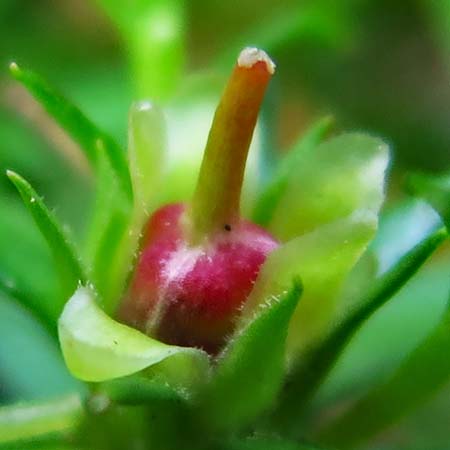
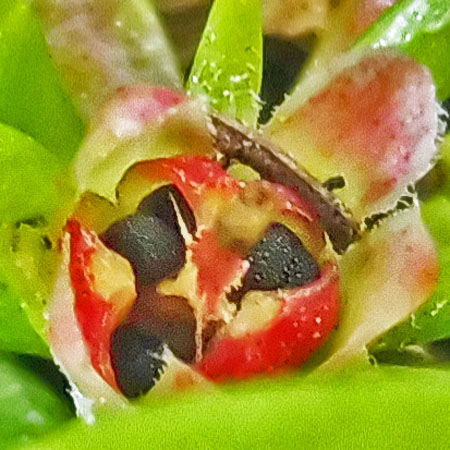

Leaves
Leaves:
The small leaves are stiff, oblanceolate and awl pointed. They are sessile and dense along the stem. There are some hairs near the base. The green leaves are reddish in the sun and turn red late in the season.
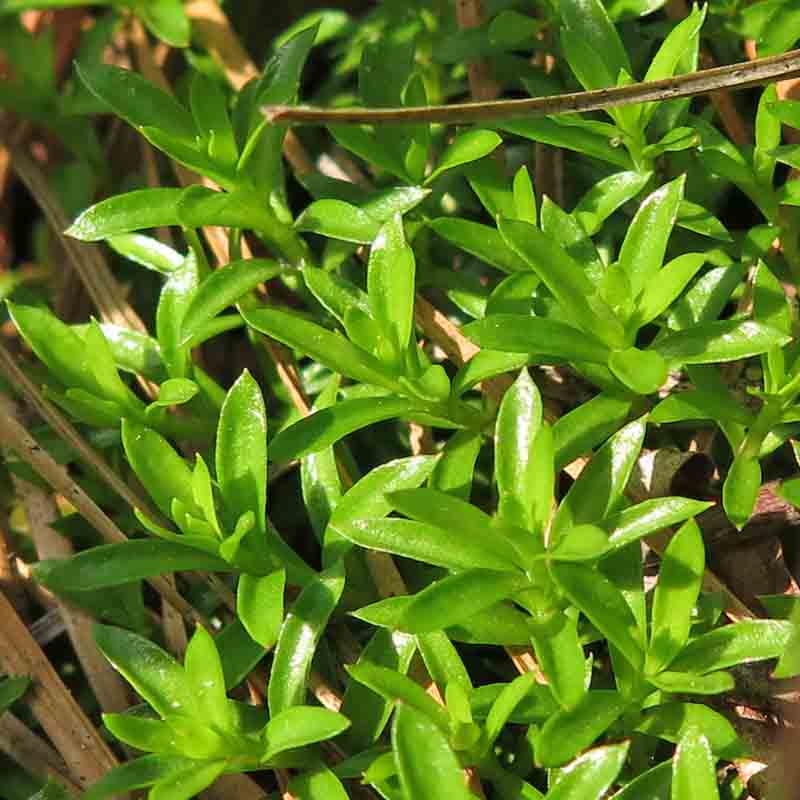
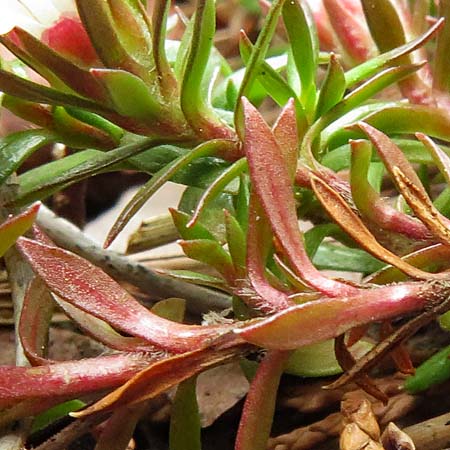
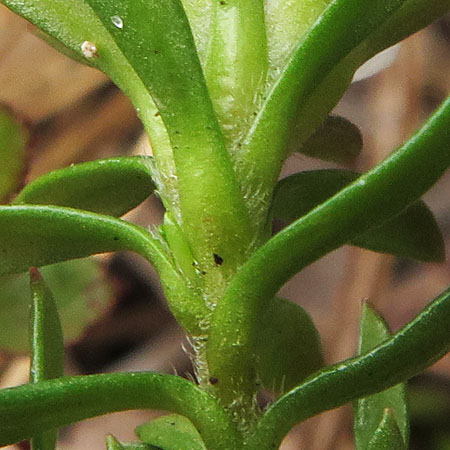
Plant & Habitat & Rarity
Pyxidanthera barbulata are low growing, evergreen, and creeping subshrubs. The plant can form large mats several feet wide. The flowers are solitary and sessile on short leafy branches.
Here individual stems can be seen. Flowers may develop at the stem end or along the stem. Each flower can have its own stem. In the sun, stems and leaves are frequently red.

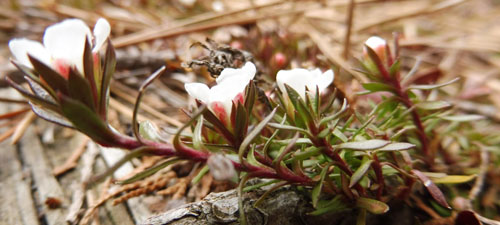
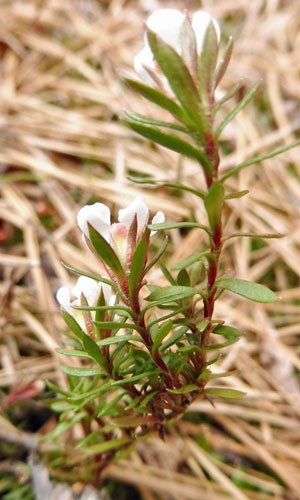
Pyxie-moss mat. Note all the pine needles and gravel.

Pyxidanthera barbulata occurs in sandy/gravely areas in pine barrens. Frequently the water table is high in these areas.
Rarity: Pyxidanthera barbulata is found in only 5 states due mainly to its habitat restrictions. NatureServe(2025) indicates that in NJ pyxiemoss is S4(apparently secure) but it is rare in all the other states that it is found: NY-S1, NC-S3, SC-S2, and VA-S1. NJ is fortunate to have pyxiemoss in reasonalble abundance in the the pine barrens. Interestingly, NatureServe says it is S4 globally!
Pyxie-moss diagram. (Internet archives, 1857)

Text by Millie Ling and all photos by Hubert & Millie Ling. Photos: Pine Barrens 2017: Flowers taken in April 13 & 28, Fruiting June 14.
Additional information / References
Additional information / references:
- Journal of the Arnold Arboretum https://archive.org/download/biostor-62072/biostor-62072.pdf
- Fieldwork: Pixie-Moss https://www.bbg.org/article/fieldwork_pixie_moss
- New York Natural Heritage Program https://guides.nynhp.org/pyxies/
- NatureServe: distribution and rarity https://explorer.natureserve.org/Taxon/ELEMENT_GLOBAL.2.158139/Pyxidanthera_barbulata